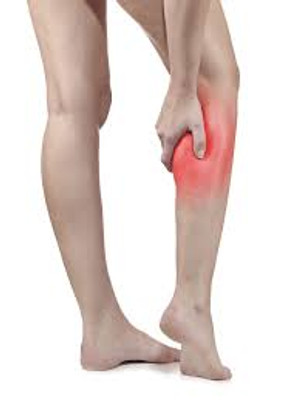Calf Cramps While Diving: Prevention and Quick Relief
Posted by Ronald Beltramo on on 18th Apr 2024
Scuba diving is an exhilarating experience, but nothing can ruin a dive faster than a painful calf cramp. This is the most common type of muscle cramp divers experience, often striking unexpectedly and causing discomfort—or even panic—if not handled properly. Understanding why cramps happen, how to prevent them, and how to relieve them can ensure you stay focused on exploring the underwater world instead of struggling with muscle pain.
What’s Actually Happening?
A calf cramp occurs when the muscles in the lower leg involuntarily contract and tighten, causing intense pain and stiffness. This can happen due to dehydration, overuse, poor circulation, or improper finning technique.
When diving, the calf muscles work harder than normal because of:
✔ Finning motion – Constantly flexing and extending the foot to kick can strain the calf muscles.
✔ Cold water exposure – Muscles contract more in colder environments, making cramps more likely.
✔ Restricted circulation – Tight wetsuits, ill-fitting fins, or poor positioning can reduce blood flow to the legs.
How to Prevent Calf Cramps While Diving
1. Stay Hydrated
Dehydration is one of the biggest culprits behind muscle cramps. Before and after diving, drink plenty of water to keep your muscles functioning properly. Avoid excessive caffeine and alcohol, which can contribute to dehydration.
2. Eat a Nutrient-Rich Diet
Essential minerals like potassium, magnesium, and calcium help regulate muscle contractions and prevent cramping. Include foods such as:
✔ Bananas, oranges, and avocados (rich in potassium)
✔ Nuts, seeds, and leafy greens (magnesium sources)
✔ Dairy, fish, and legumes (high in calcium)
3. Stretch Before and After Diving
A proper warm-up reduces muscle tightness and improves flexibility. Before entering the water, perform dynamic stretches such as:
-
Calf stretches: Stand on a step and lower your heels to stretch your calves.
-
Ankle rotations: Rotate your feet to loosen up your joints and muscles.
-
Hamstring stretches: Stretching the back of your thighs can help reduce strain on your calves.
4. Use Proper Finning Techniques
✔ Avoid over-exertion – Kicking too hard or using stiff fins can fatigue your calf muscles.
✔ Use the right fins – Ensure your fins are a good fit and not too stiff for your leg strength.
✔ Alternate kick styles – Try frog kicking instead of constant flutter kicks to use different muscles and reduce strain.
5. Keep a Relaxed Breathing Pattern
Stress and improper breathing can contribute to muscle tension. Focus on slow, deep breaths to stay relaxed underwater. Avoid overexertion, and pace yourself during long swims.
What to Do If You Get a Calf Cramp While Diving
If a cramp strikes mid-dive, stay calm and follow these steps:
-
Signal Your Dive Buddy – Let them know you’re having an issue so they can assist if needed.
-
Stop and Relax – Avoid kicking aggressively, which can worsen the cramp.
-
Manually Stretch the Muscle –Massage the Area – Use your hands to gently rub and loosen the muscle.
- Grab the tip of your fin and pull your toes toward your shin.
- This lengthens the contracted muscle and helps relieve tension.
-
Move Your Foot in Circles – Slow ankle rotations improve circulation and reduce tightness.
-
Breathe Deeply and Stay Buoyant – Maintain neutral buoyancy and focus on controlled breathing while stretching.
Practice Makes Perfect
To ensure you don’t panic if a cramp happens, practice the calf cramp removal technique during pool training or shallow dives. This will make it easier to react calmly and efficiently in real-life situations.
Final Thoughts
Calf cramps can be annoying, painful, and even dangerous if they strike at the wrong moment. But by staying hydrated, eating well, stretching, and using proper diving techniques, you can significantly reduce your chances of experiencing them. If a cramp does happen, staying calm and knowing how to relieve it quickly will keep your dive safe and enjoyable.
With these tips in mind, you’ll be ready to dive comfortably and explore with confidence—cramp-free!

